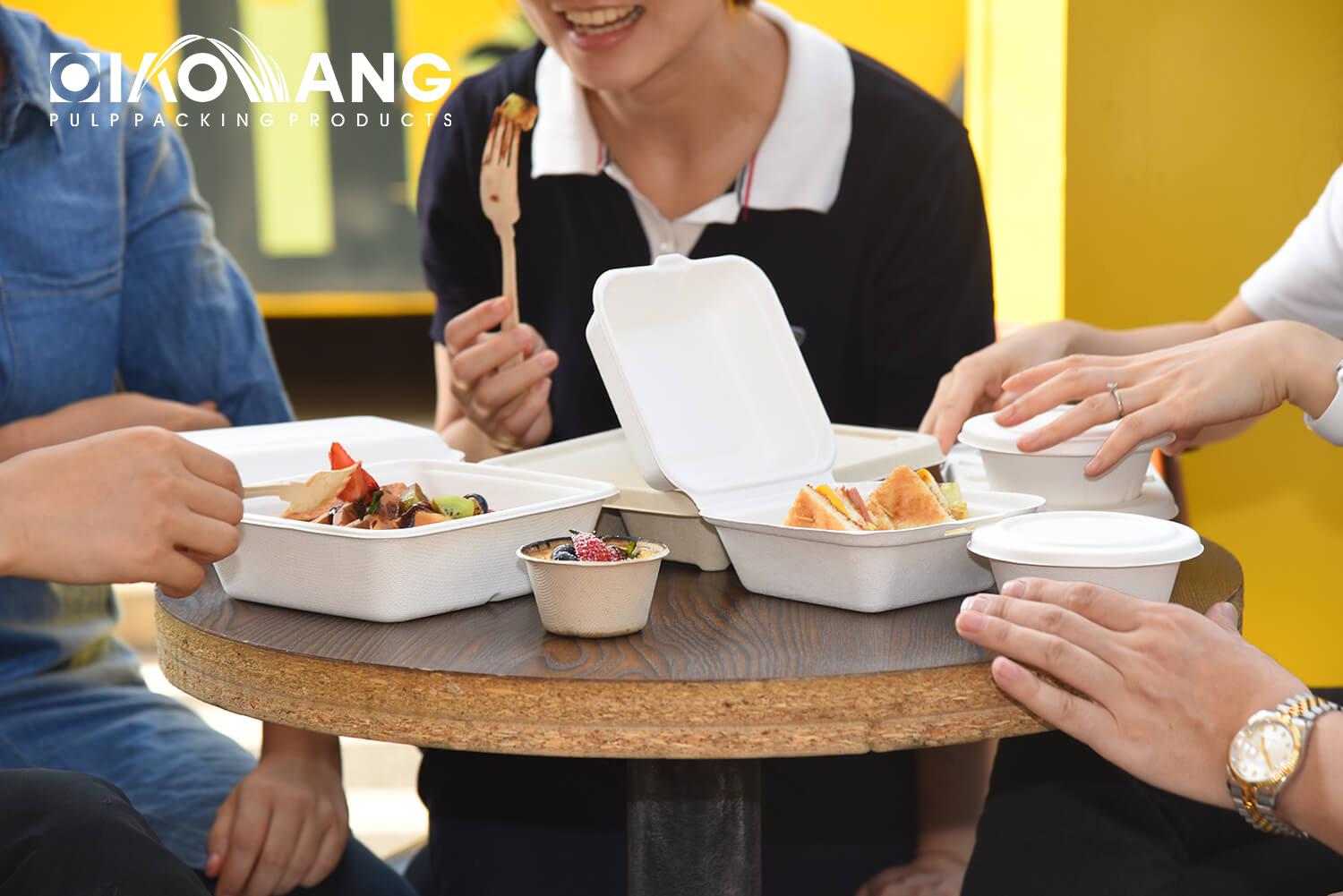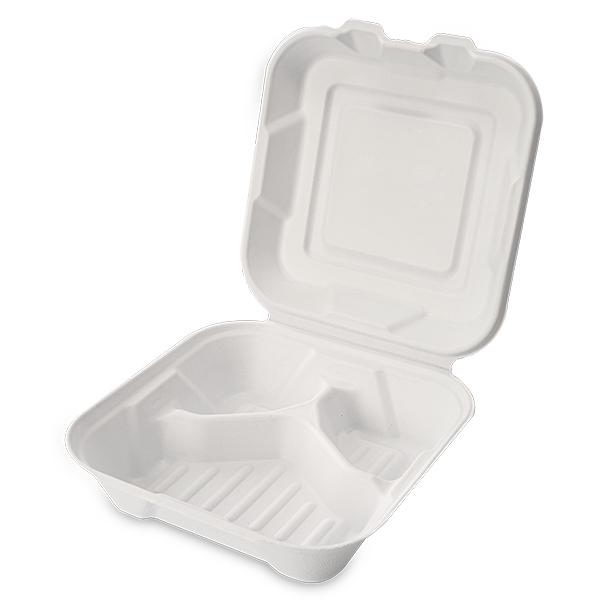Clamshell packaging has grown in popularity over the years due to its versatility and ability to effectively showcase products. Clamshell packaging is a hinged structure (usually made of plastic) that creates a protective packaging experience. Its purpose is to protect fragile items during transportation and to prevent tampering. Its sturdy design ensures the safe delivery of products from production to consumers’ hands.
Sustainable packaging is an excellent example of responsible innovation that is bringing progress and environmental preservation. It reduces waste and pollution using biodegradable materials, recycled content, and environmentally friendly processes. It basically represents our collective responsibility to protect and nurture our planet, instilling pride in both businesses and consumers.
Types of Clamshell Packaging
Clamshell packaging comes in various materials, including plastic, paper, and biodegradable options. Plastic clamshells have long been favored for their durability and product visibility. They are available in different sizes and shapes, including oval, triangular and rectangular. However, with the growing concern for the environment, sustainable alternatives have emerged.
Paper clamshells, in particular, have gained attention for their eco-friendly attributes and versatility. They offer a natural and appealing aesthetic while maintaining the necessary protective qualities of packaging.
Advantages and Disadvantages of Clamshell Packaging
Clamshell packaging offers several advantages that make it an excellent choice for product packaging.
- First and foremost, its transparent design allows customers to see the product before purchasing, enhancing the overall shopping experience.
- Moreover, clamshell packaging provides superior protection, ensuring the product remains intact and undamaged during transportation and storage.
- Additionally, these packages are easy to open and close, providing convenience for retailers and consumers.
However, it is also vital to consider the disadvantages of clamshell packaging. One major concern is the waste generated from these packages, as they often cannot be recycled easily due to the combination of materials used. This creates challenges in waste management and sustainability efforts.
Addressing these concerns, the industry has been actively exploring alternative materials that are biodegradable and compostable.
Sustainable Alternatives to Traditional Clamshell Packaging
Sustainable alternatives have been developed to combat the environmental impact of traditional clamshell packaging. Biodegradable and compostable materials have gained prominence, offering a more eco-friendly solution. These materials break down naturally, reducing the waste accumulated in landfills.
Qiaowang, as a forward-thinking company, has developed paper clamshell packaging made from bagasse pulp, a byproduct of sugarcane processing. This innovative approach to packaging ensures a sustainable solution without compromising quality or functionality.
Benefits of Qiaowang’s Paper Clamshells
Qiaowang’s paper clamshells offer a range of benefits, making them an ideal choice for businesses and consumers alike. Here are some of the benefits of environment-friendly clamshell packaging.
1. Wide Range of Shapes and Sizes
First, they come in various shapes and sizes, providing flexibility for different products. Whether you are packaging delicate items or larger products, Qiaowang has the perfect solution.
2. Microwave and Refrigerator Safe, Waterproof, and Oil-Proof
These clamshells are microwave and refrigerator safe, ensuring the product’s freshness and quality are maintained. Moreover, they are waterproof and oil-proof, protecting the product from moisture and potential leaks.
3. Customizable and Printable
One of the critical advantages of Qiaowang’s paper clamshell packaging is its customizability and printability. Businesses can add branding elements, logos, and product information, creating a unique and eye-catching packaging solution. This enhances the product’s visibility and reinforces brand identity and recognition
4. Biodegradable and Compostable After Use
Most importantly, Qiaowang’s paper clamshells are biodegradable and compostable after use. They break down naturally, leaving behind no harmful residues or pollutants. This ensures a greener future and aligns with sustainable practices.
By choosing Qiaowang’s paper clamshells, businesses can demonstrate their commitment to environmental responsibility and meet the growing demand for eco-friendly packaging options.
Conclusion
Considering sustainable packaging options is of utmost importance in current times. We can reduce our ecological footprint and the damaging effects of packaging waste on the environment. Sustainable packaging helps protect our planet and encourages a more sustainable future for future generations by embracing biodegradable materials, recycled content, and eco-friendly production techniques.
Qiaowang’s paper clamshells are designed with both functionality and sustainability in mind. Their wide range of shape and size options make them suitable for various products, from small electronics to fresh produce. These paper clamshells offer practical benefits that enhance the overall customer experience and are microwave and refrigerator safe. Customizability is another crucial feature of Qiaowang’s sustainable packaging.
Most importantly, Qiaowang’s paper clamshells are biodegradable and compostable. After use, these clamshells can be disposed of in an environmentally friendly manner, as they naturally decompose without leaving harmful residues.
About Qiaowang
Qiaowang is a market leader in the packaging industry. As a responsible company, we are dedicated to producing high-quality packaging solutions that meet the needs of modern businesses while prioritizing sustainability. Our commitment to eco-friendly practices is evident in our development of paper clamshells and the use of bagasse pulp, a renewable resource.
By choosing Qiaowang’s paper clamshells, businesses can align themselves with sustainable packaging options and contribute to the global effort to reduce plastic waste.




